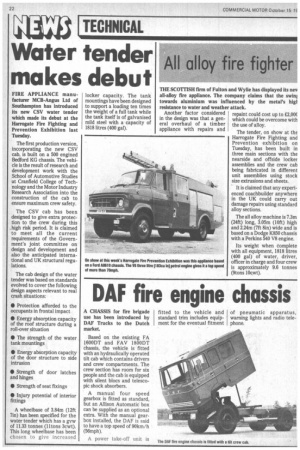ArAX TECHNICAL
Page 24

If you've noticed an error in this article please click here to report it so we can fix it.
Water tender makes debut
FIRE APPLIANCE manufacturer MCB-Angus Ltd of Southampton has introduced its new CSV water tender which made its debut at the Harrogate Fire Fighting and Prevention Exhibition last Tuesday.
The first production version, incorporating the new CSV cab, is built on a 500 engined Bedford KG chassis. The vehicle is the result of research and development work with the School of Automotive Studies at Cranfield College of Technology and the Motor Industry Research Association into the construction of the cab to ensure maximum crew safety.
The CSV cab has been designed to give extra protection to the crew during this high risk period. It is claimed to meet all the current requirements of the Government's joint committee on design and development and also the anticipated international and UK structural regulations.
The cab design of the water tender was based on standards evolved to cover the following design aspects relevant to real crash situations: • Protection afforded to the occupants in frontal impact • Energy absorption capacity of the roof structure during a roll-over situation • The strength of the water tank mountings • Energy absorption capacity of the door structure to side intrusion • Strength of door latches and hinges • Strength of seat fixings • Injury potential of interior fittings A wheelbase of 3.84m (12ft 71n) has been specified for the water tender which has a gvw of 11.33 tonnes (1 ltons 3cwt). This long wheelbase has been chosen to give increased locker capacity. The tank mountings have been designed to support a loading ten times the weight of a full tank while the tank itself is of galvanised mild steel with a capacity of 1818 litres (400 gal).






















































































































